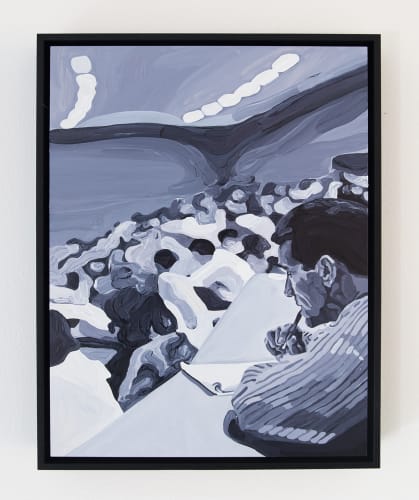We know we cannot live in the past but the past lives in us.
Thea Anamara Perkins is descended from a renowned lineage of warriors - black and white - fighters for social justice and First Nations rights. Members of her family committed their entire existence seeking better lives, not only for their immediate relations but also for all First Nations Peoples.
Nearly every Australian of a certain period – the mid to late 20th century – is likely familiar with the name of her maternal grandfather - revered, indefatigable Arrernte/Kalkadoon activist Charles Nelson Perkins (1936 – 2000).
Born on the kitchen table at The Bungalow Half-Caste Home in Alice Springs, Charles Perkins, broke ground and barriers as a First Nations man who would not take no for an answer, refused to be boxed in, pilloried by the nay-sayers in his lifelong fight for equal conditions for his people.
Yet, while the everlasting light of her grandfather illuminates Thea’s life (and that of her family), she has also been surrounded, by the grounded matrilineal strength of women kin – her mother Hetti, aunt Rachel, grandmother Eileen and great-grandmother Hetti just some of the lifelines which have sustained and nurtured her, encouraging her artistic development.
Thea’s life has been immersed in culture and creative practice. Growing up surrounded by works of art created by some of the greatest innovators of First Nations visual culture. Literature, performance and the moving image were equally part of this worldview.
Her mother is acknowledged as one of the country’s leading First Nations curators and cultural leaders, here and overseas. Her aunt is respected for her contribution to, and shaping of the way in which First Nations Peoples are represented and viewed in multiple media: film, television, digital broadcast and streaming, nationally and across the world.
Thea has always been an observer – her twinkling liquid, deepest-black button eyes as an infant in arms when I first met her - always watchful, absorbing all that was happening in the world around her.
Thea draws quiet, determined strength from her ancestors, evident in her chosen medium of painting. These intimate canvases - rendered in tones of black, white and grey – attract the viewer, enticing them to lean in, to view the delicate, liquid brush strokes of the artist’s hand, up close and personal.
The images appear familiar – are they reproductions, representations of family album snapshots? Or mirrors onto events from times not long gone; yet in the same moment, seemingly eons past in terms of innocence and optimism?
The incessant grinding down of decency in recent decades has been enervating, fatiguing, despairing – all those hard fought gains by warriors in the past seemingly undone at the whim of small-minded faceless grey men.
The accumulative impact of wilful inaction and degradation has heightened everyone’s levels of anxiety, yet this is when we most need to hold onto the best that human nature is capable of being – irrepressible, audacious, resolute, steadfast – solid and deadly.
Lean into these little gems, let the sensuality of the materials wash over you as you wonder about times gone depicted as snippets of historical archives, an era seemingly more innocent than now. We do well to remember that in the shadows lay lessons of bygone times. And while we cannot live in the past, the past lives in us still.
© Dr Brenda L Croft, Gurindji | Malngin | Mudburra Peoples; Anglo-Australian | Chinese | German | Irish heritage, Professor of Indigenous Art History and Curatorship, Australian National University 2022

